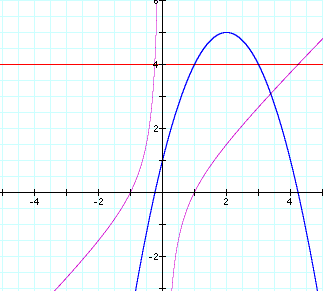
William Plummer - Assignment 3
Examine the following equation:
![]()
This equation is the standard quadratic equation where a = 1, and c = 1 over various values for b
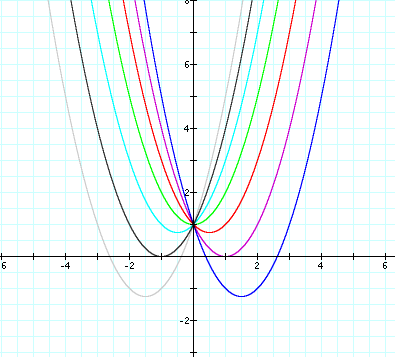
To graph this relation in the xb plane in Graphing
Calculator we substitute a y for the b in the original equation.
So now we are graphing the following equation.
![]()

If we let b = 5 in the original equation and overlay
that graph (y=5 for the graph in the xb plane), then we have a horizontal line that intersects the curve at two
points.

These points correspond with the roots obtained when
we set b equal to the same value on the xy plane

It is easy to see that the x values of the
intersections for any value of b in the xb plane are the same as the x values
where the parabola intersects the x-axis.
We can observe the following results for different
values for b:
b > 2
results in 2 negative real roots
b = 2 results in one negative real root
-2 < b < 2 results in no real roots
b = -2 results in one positive real root
b < -2 results in two positive real roots
What happens
when take the original equation and change the value of c from +1 to -1?
In the xy plane, the parabola shifts down and now
intersects the y-axis at y = -1.
![]()
When we change the value of b in this new equation,
the parabola always intersects the x-axis in two places, so there two real
roots across all values of b.

When we examine our new relation in the xb plane, we
see that the shape of our curve has changed.

When we overlay the graph of b = k for any value of k,
the graph intersects our curve in two places over all values of k, (and therefore, all values
of b)

When we look at the graphs of both xy and xb, we see
the corresponding roots of the parabola and the intersection of the curve with
the graph of b = k for all values of k.
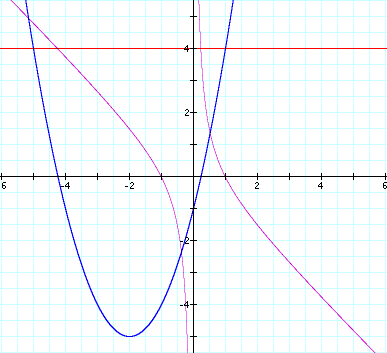
How about
when c = 0?
When c = 0, the parabola intersects the y-axis at the
origin where y = 0. This point
serves as a constant root (x = 0) whenever c = 0. It is the only root when b = 0.
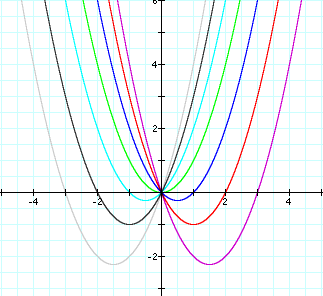
As the value of b changes, the equation has two roots,
one at x = 0 and one at x = -b
LetŐs see the xy plane overlayed by the xb plane
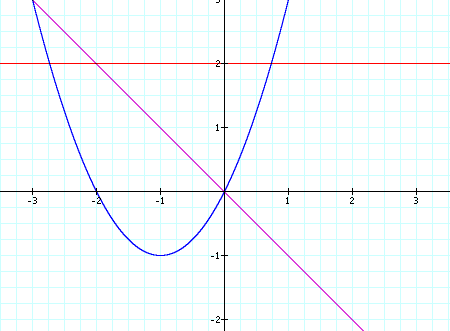
What happens
when a a negative value?
Our original equation changes to the following:
![]()
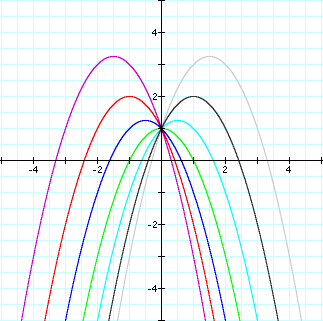
When the value of a is negative, our parabola still
intersects the y axis where y = c,
but now it opens down. Since the
parabola intersects the y-axis at a positive value and opens down, it always
results in two real roots.
LetŐs see the parabola overlayed with the xb plane
